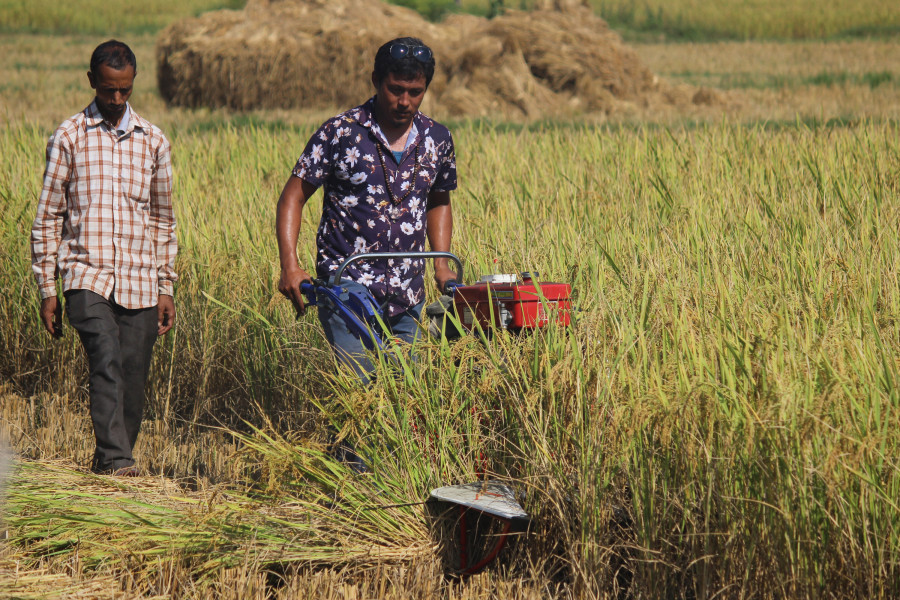Money
Neck blast disease destroys Chitwan's spring paddy crop
Chaite paddy is grown on about 5,000 hectares in Chitwan.
Ramesh Kumar Paudel
From afar, they look like ripening paddy fields, but a closer observation reveals something else. The standing spring paddy crops at Khairhani Municipality-10 Kathar in east Chitwan have been afflicted by a plant disease known as neck blast, which causes the grain to shrivel.
"It's neck blast. The paddy plant looks like it has ripened, but actually it has dried up due to the disease," said Durga Devi Acharya who had planted spring paddy known as Chaite paddy on 16 katthas this year.
She says she is ruined. "Everything is gone. I will not be able to bring home a single grain of paddy this year,” Acharya said.
Krishna Aryal, another farmer from the same village, had planted paddy on 38 katthas. His story is similar. The paddy crop he had planted earlier had died, but he thought the second crop would not be infected. Within three-four days, all the paddy plants started turning white, he said.
This problem has been seen not only at Kathar but all over east Chitwan where Chaite paddy is cultivated. According to Madhav Poudel of the Prime Minister Agriculture Modernisation Project, Chitwan, Chaite paddy is grown on about 5,000 hectares of land in Chitwan.
Most of the farming is done in east Chitwan. The project has declared 2,600 hectares of land south of the highway in east Chitwan as Paddy Zone.
Farmers began planting paddy varieties like Hardinath-1, Gheupuri and PR in mid-March. Hardinath-1 is the most popular variety among Chitwan farmers.
Poudel said 70 percent of the farmers plant Hardinath-1 and the rest other varieties. The neck blast outbreak occurred in fields that were planted with Hardinath-1.
A similar problem has been seen in Rapti Municipality, Poudel said. The disease has infected paddy crops in Ratnanagar where farmers planted the Chaite paddy a week later. He said that more than 50 percent of the crops would be damaged due to the neck blast disease.
Hardinath-1 is a Nepali hybrid variety and the crop acreage has increased in recent years. The yield reaches up to 6 tonnes per hectare. The paddy variety is not only very productive, it can withstand hail and wind better, Aryal said.
Last year too, this paddy variety had been afflicted with neck blast. But farmers still planted Hardinath-1 in their fields this year because of its high yield.
Neck blast is a fungal disease, and it can be brought under control by spraying the fields with insecticides. But the pesticide got washed away by continuous rainfall, and the disease began to spread, Poudel said.
Last year, Chitwan farmers lost their seasonal paddy crops to fake Garima seeds, and this year their crops have been affected by neck blast disease.
Nepal's paddy acreage totals 1.5 million hectares. But spring paddy is planted on only 112,000 hectares.
The government had come up with a scheme to expand the spring paddy acreage by 200,000 hectares in a bid to increase output and make the country self-reliant in food grain.
Most farmers prefer not to plant spring paddy as it has a larger grain, but its productivity is higher than that of regular paddy. According to a government source, the productivity of spring paddy is 4 tonnes per hectare compared to 3.17 tonnes for regular paddy.




 11.12°C Kathmandu
11.12°C Kathmandu1.jpg)













%20(1).jpg&w=300&height=200)
